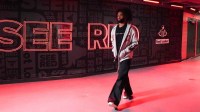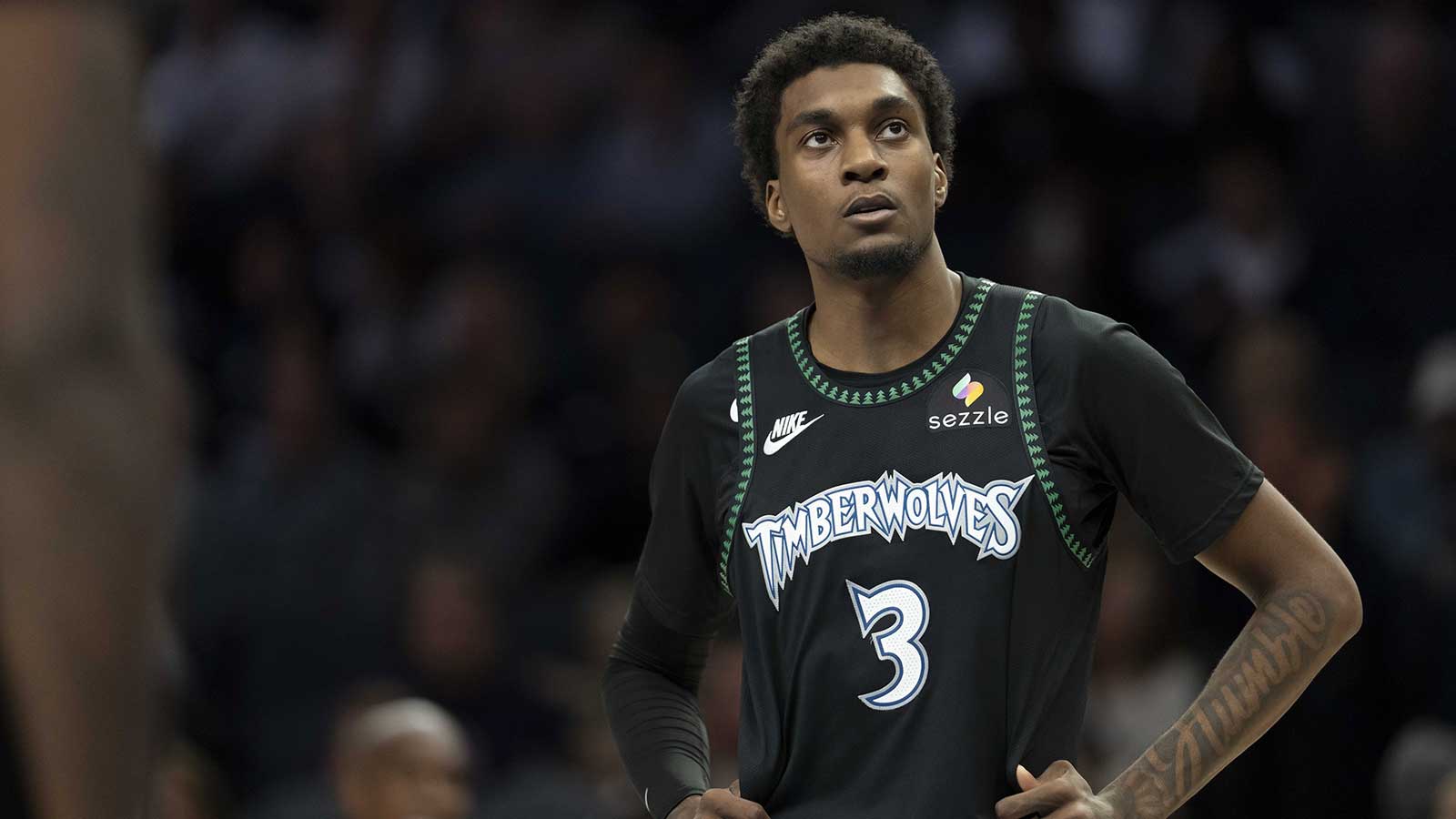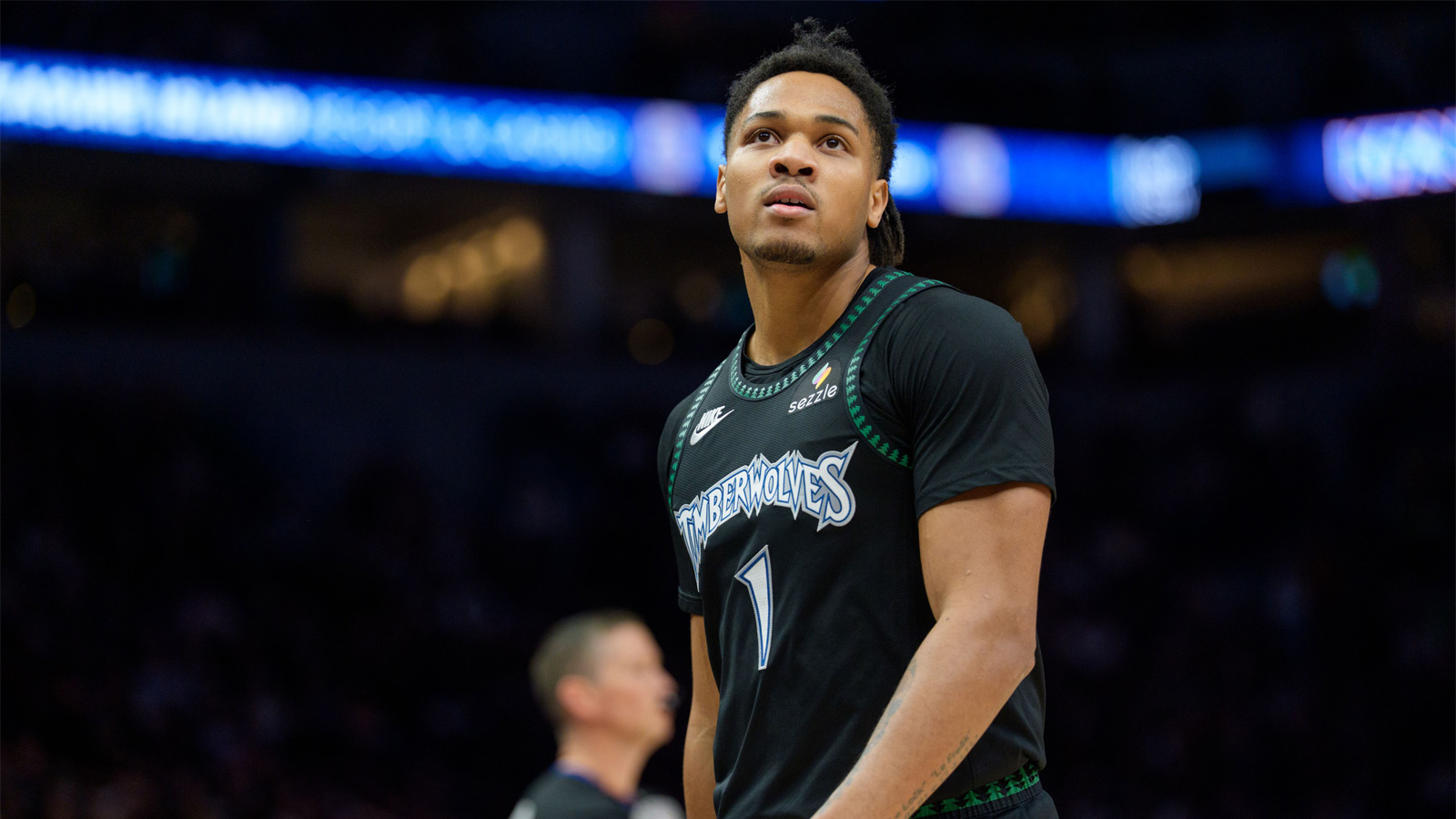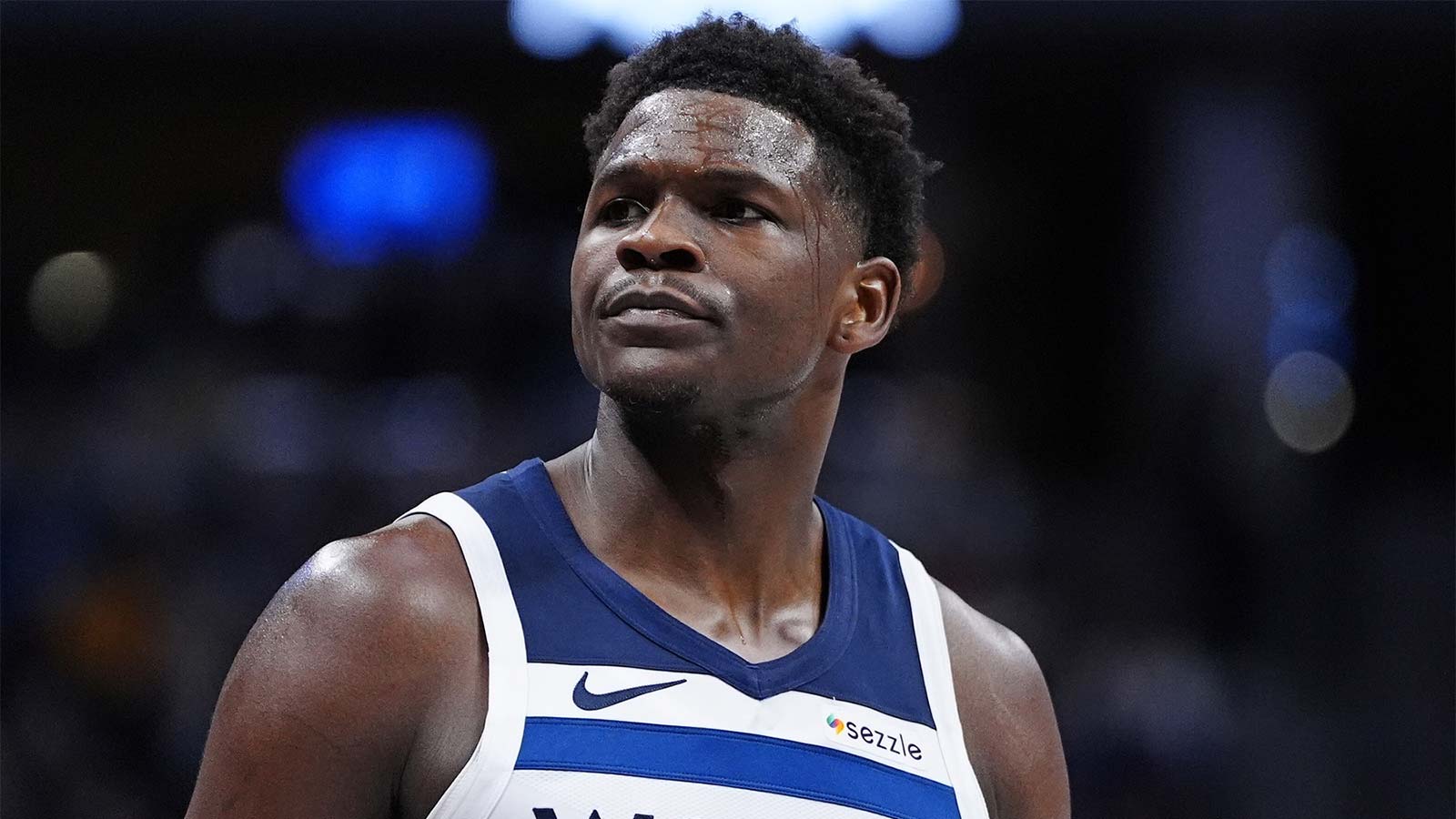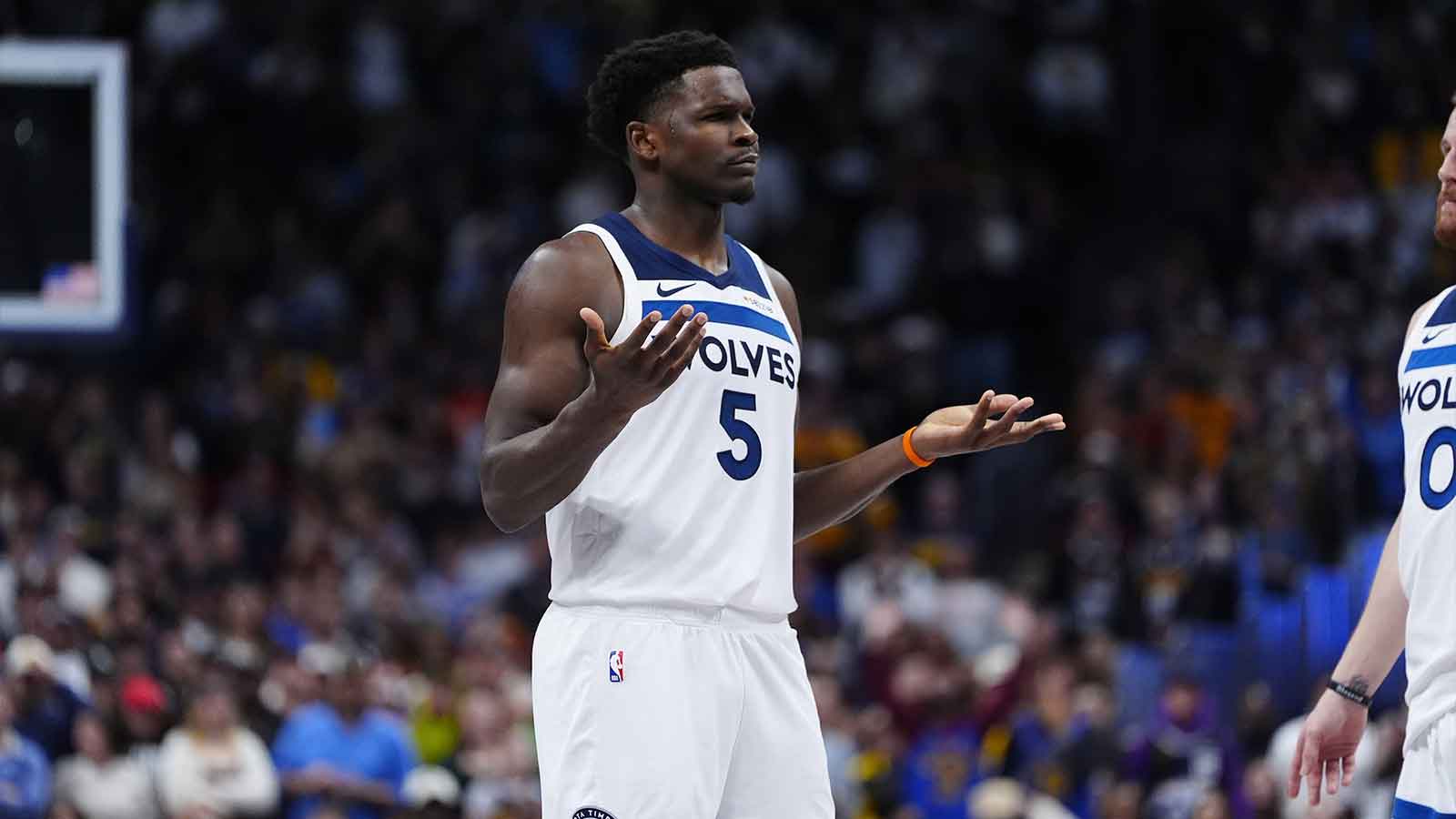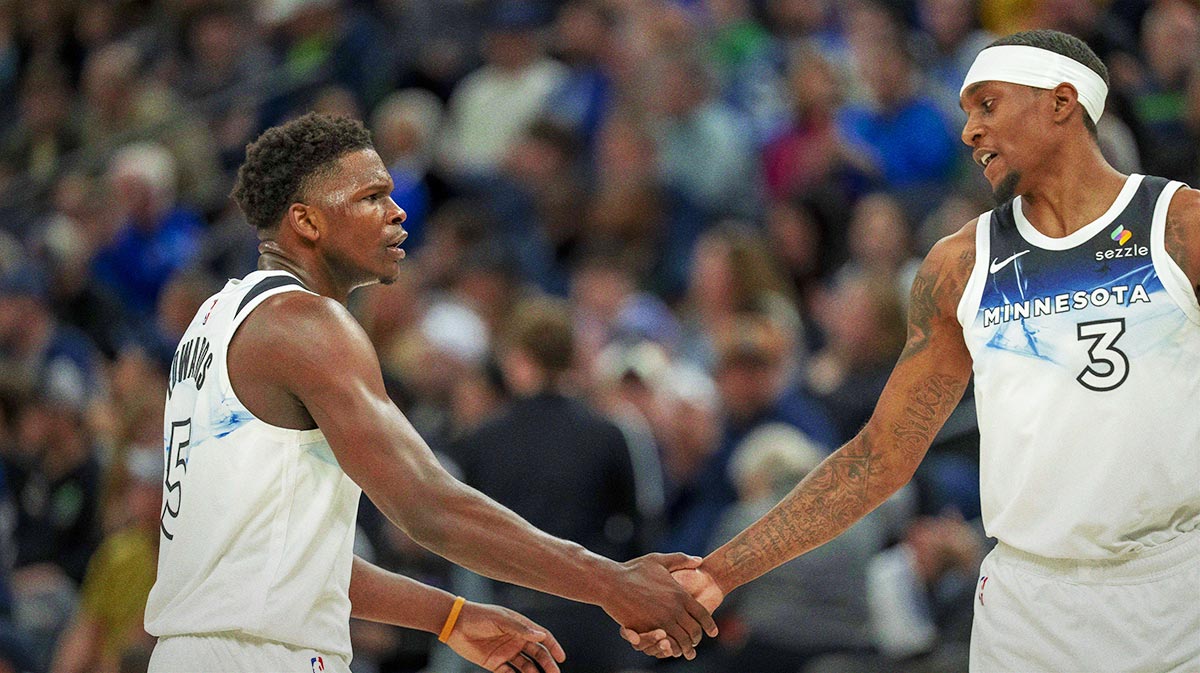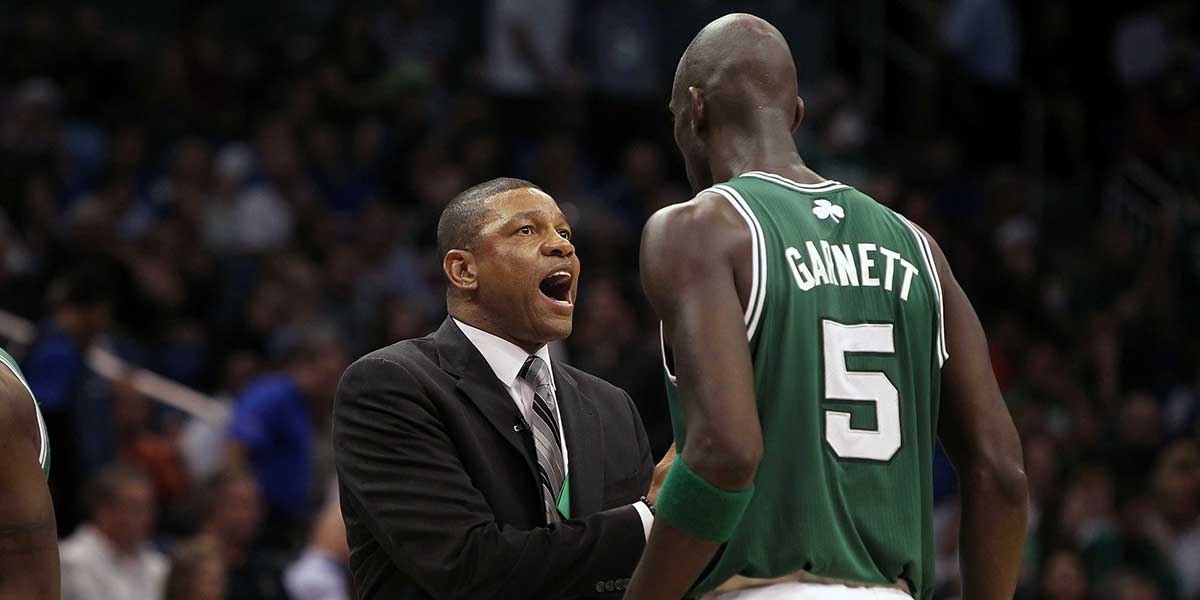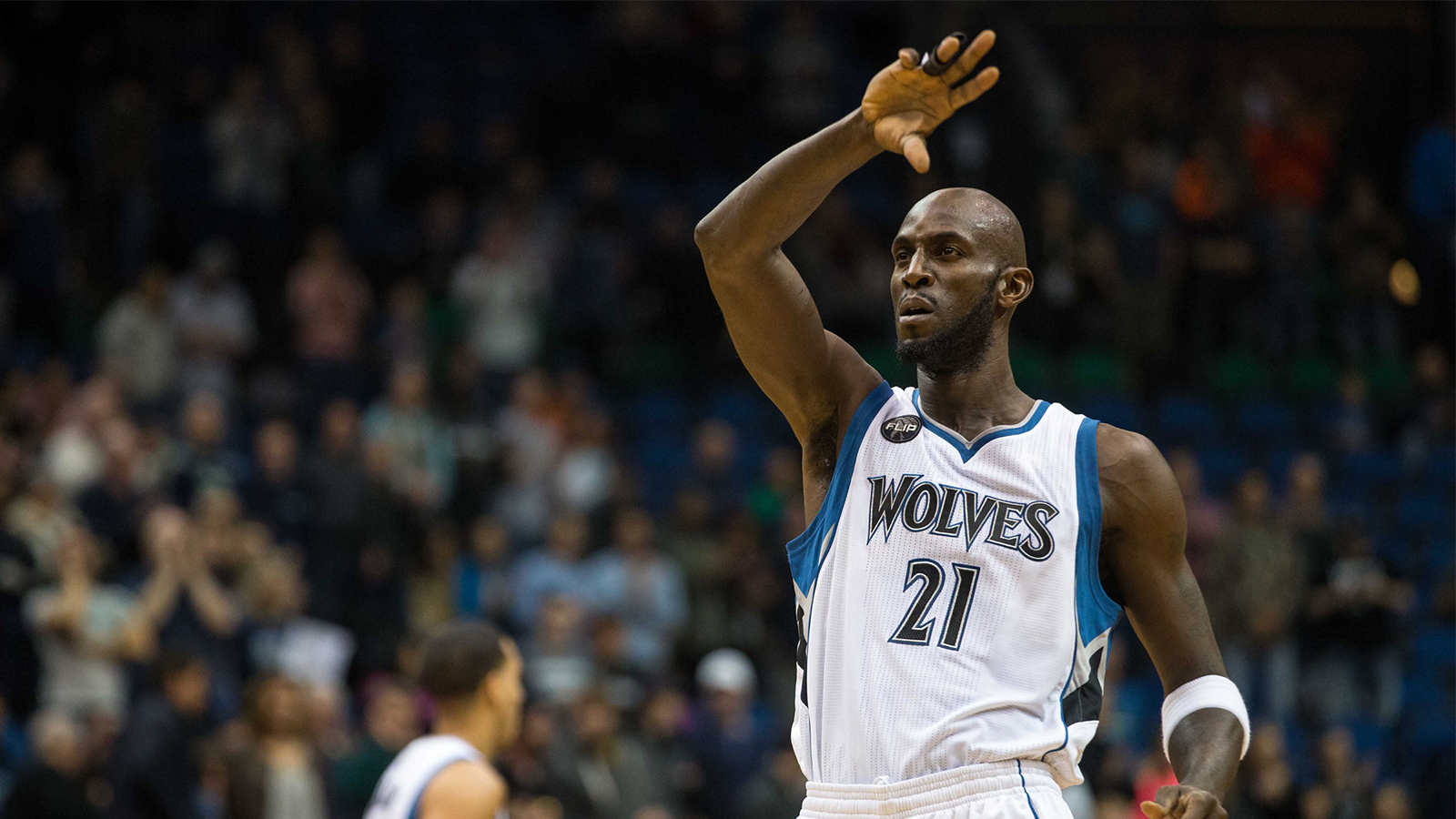The Minnesota Timberwolves continued their strong start to the season on Saturday night as they took down the Utah Jazz in convincing fashion. The Wolves moved to 3-2 on the year, which isn’t incredible, but they’ve played better than their record would indicate. With some record-setting performances, this fan base has a lot to be excited about. Let’s examine three major takeaways from the Wolves' dominant 123-95 win against Utah.
Rebounding reaps rewards
When Timberwolves president Tim Connelly pulled the trigger on the Rudy Gobert trade, it was safe to assume Minnesota would dominate the glass, or so we thought. Last season, Minnesota ranked just 23rd in total rebounds. Comparatively, the Wolves rank fifth in rebounding this season after their first five games.
The Wolves beat Utah 123-95 and outrebounded them by a total of 43-39. In each of their first five games, the Wolves have outrebounded their opponent. This season marks the first time in franchise history that Minnesota has accomplished that feat to start the year.
Gobert headlines the rebounding effort with over 12 rebounds per game. Unlike last year, the Wolves have made an emphasis to crash the glass around their center, allowing for others like Karl-Anthony Towns, Kyle Anderson, Jaden McDaniels and Anthony Edwards, among others, to assist on the boards. Their rebounding margin has been essential in building and sustaining leads.
Minnesota lies in the top five for team plus-minus at +9.6. The Wolves are currently averaging only 109.2 points per game (21st in the NBA), but their high-level rebounding has aided their impressive defense. The ability to close out defensive possessions has been vital for Minnesota jumping out to an early-season winning record.
Defensive mastery
In addition to securing rebounds, the Timberwolves' defensive scheme has been much improved to start the new season. Through five games, the Wolves have held their opponents to sub-100 points four times. Last year, Minnesota accomplished that feat just four times through the 82-game season.
Timberwolves head coach Chris Finch has made an effort to “shrink the floor” and use Minnesota’s length to disrupt scoring chances around the rim. Even in a matchup with the Utah Jazz, who have a massive frontcourt comprised of Lauri Markkanen, John Collins and Walker Kessler, the Wolves’ length reigned supreme. Utah shot just 35-of-91 (38%) from the field and Minnesota’s timely closeouts allowed the Jazz to only make 12 of their 43 3-point attempts.
After the win against the Jazz, Finch said he’s very pleased with the defense to start the year. He went on to add, “Our activity’s been good. We’re, for the most part, trying to swallow up the paint.”
With Minnesota’s unconventional roster construction, they’ve relied on Naz Reid and Towns to defend perimeter players more often than they ever have in the past. There may be some long-term ramifications from this strategy, but early on this season the bigs have lived up to the task.
Target Center aura
Not only have the Timberwolves played well this season, they have played very well at home. This season, Minnesota is 3-0 at home and has won in dominant fashion.
#Timberwolves at home (so far) this season:
vs. Heat, W 106-90
vs. Nuggets, W 110-89
vs. Jazz, W 123-95Target Center has been FANTASTIC and the fan energy has been off the charts pic.twitter.com/V9rCXBNMMh
— Sheldon Wohlman (@3swohlman) November 5, 2023
Their play at home has been exceptional in large part due to the home crowd. It can be difficult to quantify how much the home crowd plays into the team’s performance, but early on it’s clear Target Center has given a huge home-court advantage.
Whether it’s the loud cheer the first time Naz Reid checks into the game, “M-V-P” chants for Reid at the free-throw line, or the roar as Edwards flushes a huge jam or Gobert sends a shot attempt flying, Minnesota’s home court is bringing more energy than I can ever remember. The combination of talent and high expectations has Minnesota’s ambience on a whole new level.


